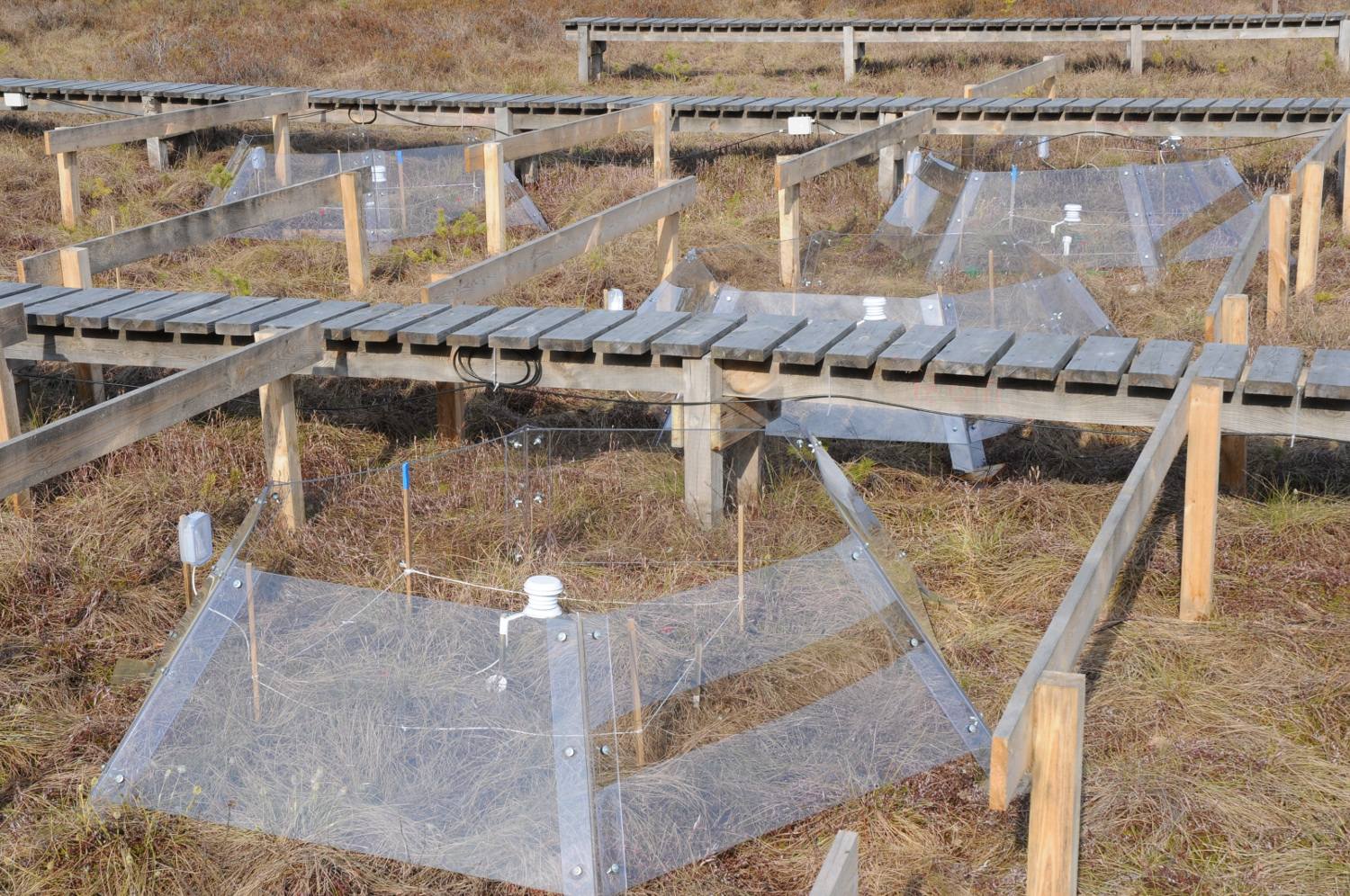Influence of global warming and drought on carbon sequestration and biodiversity of Sphagnum peatlands – present, past and future perspectives
Project

Funding : Polish-Swiss Research Programme
Year : 2012-2015
Description :
In the proposed research we want to use Sphagnum peatlands (located in N Poland) as a model ecosystem and analyze its vulnerability to climate change applying an experimental setup that simulates in situ an increase of temperature and drought. The underlying idea is to determine to what extent climate warming in combination with drought can modify peatland functioning in a polish bog which fits in an oceanic-continental climate gradient with similar studies underway in other climate settings, such as in the Jura and in Russia. In particular we want to see how these climate changes can deteriorate the C sink function of peatland ecosystems. More precisely, the project aims at evaluating the effects on (1) the balance of C fluxes above- and belowground (especially via respired CO2), (2) the biodiversity and microbial activities on Sphagnum and in the peat, (3) the structure of plant communities and primary production, and (4) dynamics of labile and recalcitrant organic matter (OM) of the peat substrate. Simultaneously, the study of the most useful biological and geochemical compartments will lead to better identification and calibration of markers of temperature-drought-induced changes (e.g. testate amoebae community structure, isotopic composition of organic compounds). The patterns of the identified proxies will be used to reconstruct climate changes during the last 1000 years. It is still not clear how fast peatlands respond to changes in temperature and droughts in continental climate setting and indeed this is an important issue, since continental regions account for a significant proportion of all northern hemisphere peatlands.
Keywords :
Peatland, climate change, warming, water table manipulation, OTC experiment, microcosm experiment, carbon, vegetation monitoring, soil microorganisms, soil biogeochemistry, gas exchanges (NEE, soil respiration), paleoecology.
Collaborators :
Prof. Alexandre Buttler, EPFL-WSL-ECOS – Swiss PI
Prof. Mariusz Lamentowicz, University Adam Mickiewicz, Poznan – Polish PI
Dr. Vincent Jassey, post-doc EPFL-WSL-ECOS
All partners: http://www.climpeat.pl/people.php
Partnership :
University Adam Mickiewicz, Poznan, Poland
Poznan University of Life Science, Poland
Ecole Polytechnique Fédérale de Lausanne, Switzerland
Swiss Federal Research Institute WSL, Switzerland
University of Neuchâtel, Switzerland
Study site :
Linje mire is located in northern Poland near Bydgoszcz city (northern Poland), within the Complex of Chełmno and Vistula Landscape Parks (53°11’15”-53°11’30”N, 18°18’37”-18°18’48”E
Links :